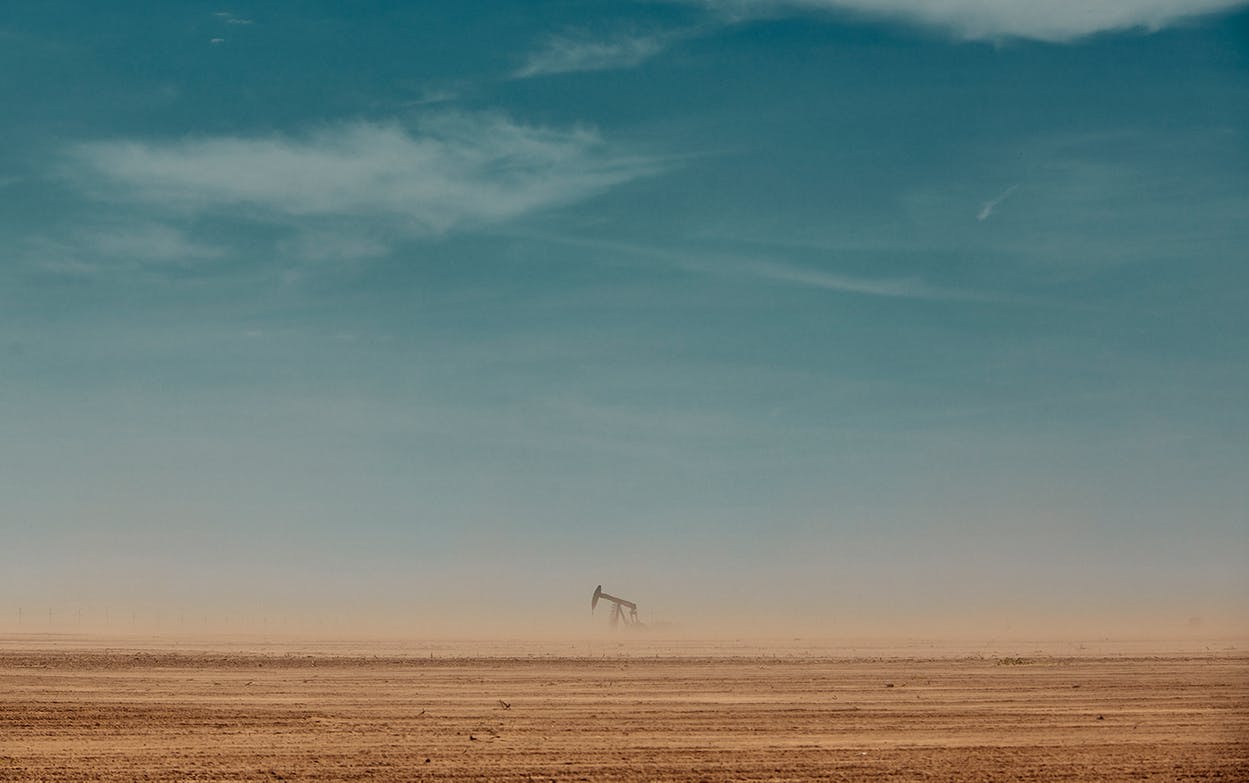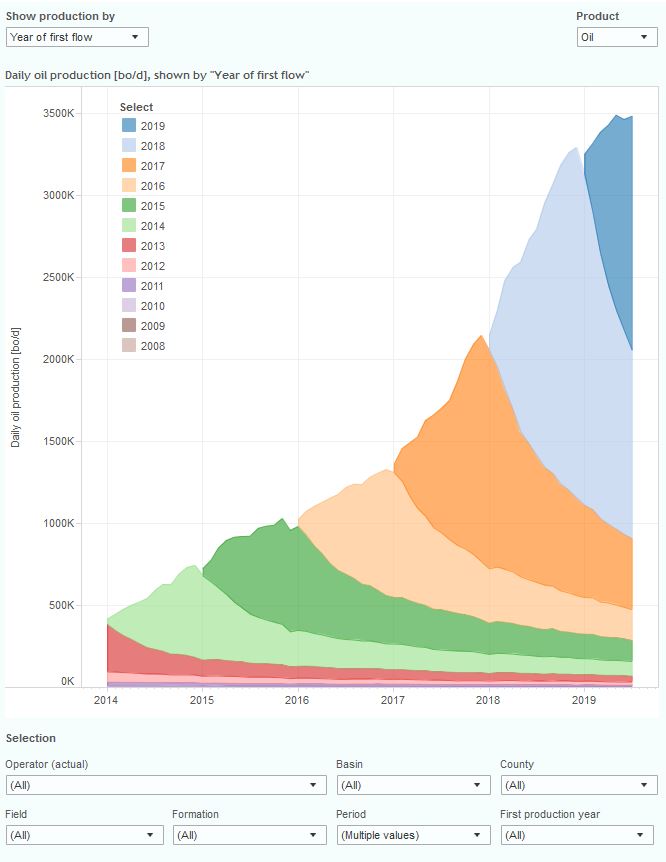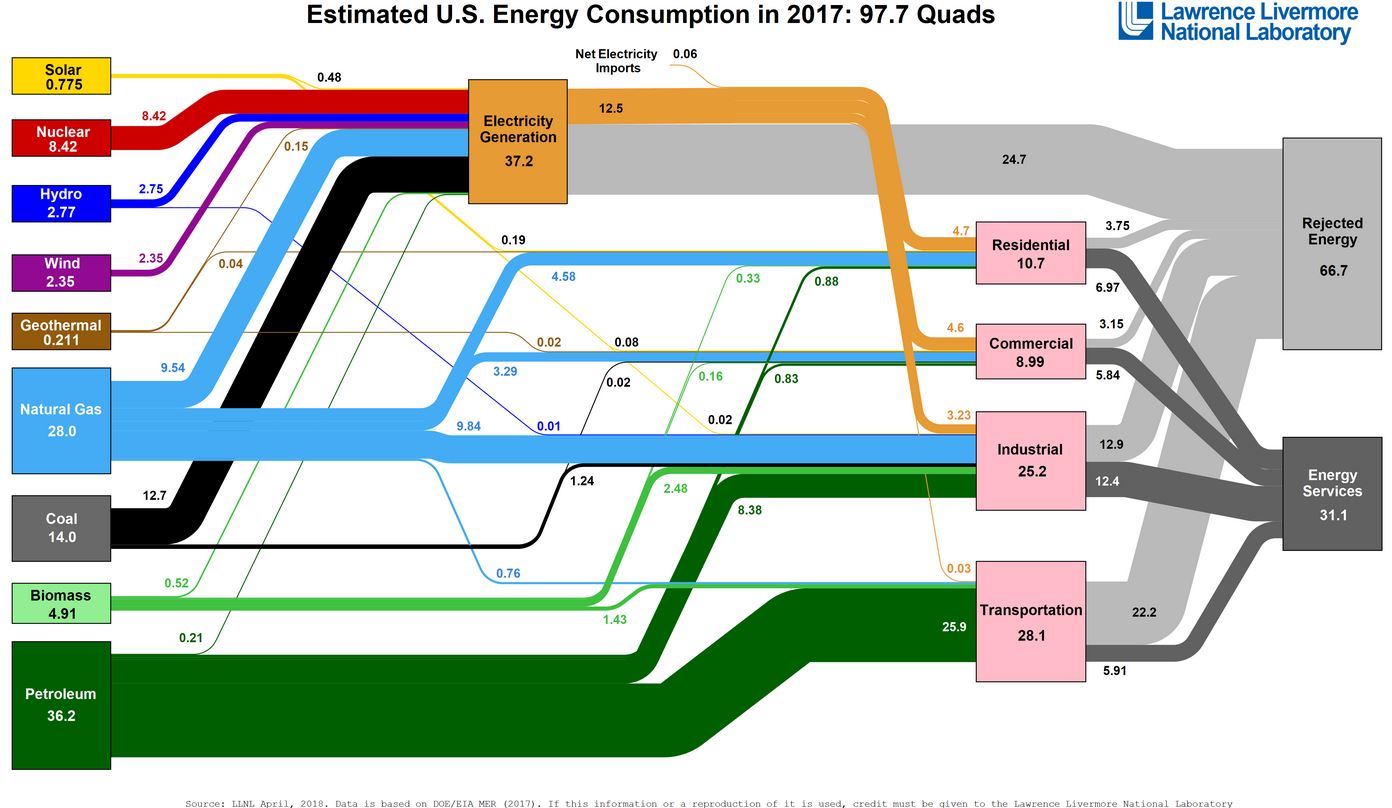I highly recommend a podcast sponsored by Texas Monthly, Boomtown. It’s a series about the history of the Permian Basin and the people who live and work there in the recent boom. Its host is Christian Wallace, who grew up in Andrews. You’ll get to meet his grandmother, who still lives there – quite a lady. You can download it on Apple Podcasts.
Articles Posted in Something completely different
Two Fun Resources
A friend recently told me about two great websites: www.oilystuffblog.com, and www.shaleprofile.com. The first is a fun read authored by Mike Shelman, “Oily Humor & Short Stories About a Very Long, Oily Life.” Here’s a post about “BOE,” or “barrels of oil equivalent.”
Shale Profile is a subscription site, but it has a lot of free information about shale plays in the U.S. A remarkable interactive use of big data. Here’s an example, a snapshot of all production in the Permian Basin:
Juneteenth
Last Saturday our firm participated in the annual Austin parade celebrating Juneteenth, the day in 1864 it was announced in Texas that all slaves were free. The parade is the biggest in Austin, a celebration of freedom that has become a state holiday in Texas and 44 other states. June 19 also is my mother’s birthday.

Lincoln’s Emancipation Proclamation was issued on September 22, 1862, with an effective date of January 1, 1863. It declared that all slaves in the Confederate States would be free – excluding the five border states not in rebellion, and excluding the three zones then under Union occupation – Tennessee, lower Louisiana and Southeast Virginia.
Lee surrendered at Appomattox on April 9, 1864, but the Army of the Trans-Mississippi did not surrender until June 2. Union Army General Gordon Granger arrived on Galveston Island with 2,000 federal troops on June 18, to occupy Texas. The following day, from the balcony of Galveston’s Ashton Villa (see photo), 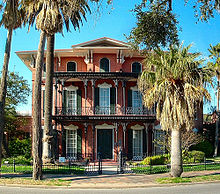 Granger read aloud General Order No. 3:
Granger read aloud General Order No. 3:
Vote for Me!
My blog has been nominated in The Expert Institute’s 2018 Best Legal Blog Contest! I’m in the category “Niche & Specialty.” And I have one vote already! So vote early and often.
Rational Decision-making in the Post-Rational World
Five years ago I wrote a blog entry titled “The Limits of Rational Decision-making.” The topic was a sociological study testing subjects’ ability to make decisions based on facts. The conclusion of the study was that knowledge does not increase a person’s ability to reason when it comes to politically charged issues. People’s biases prevent them from making decisions based on facts. I ended the post with these words:
Leon Festinger, a famous Stanford University psychologist, said that “A man with a conviction is a hard man to change. Tell him you disagree and he turns away. Show him facts or figures and he questions your sources. Appeal to logic and he fails to see your point.” Changing one’s point of view on difficult politically charged issues is difficult.
A group called “Ark Encounter” is raising money to construct a replica of Noah’s Ark in Williamstown, Kentucky, using the exact dimensions and directions found in Genesis. It will be more than 500 feet in length, three stories high, and built with planks, beams and pegs. When asked how they were going to get the more than 2 million species of animals now on the planet in the ark, they say that, in Noah’s time, there were only some 2,000 types of animals, and that all animals today descend from those original animals. Fitting myth to reality is no problem for believers. Changing their minds about the facts is more of a problem.
Battle of the Nueces
Osler McCarthy, the Staff Attorney for Public Information at the Texas Supreme Court, sends out an email to subscribers each time the Court issues opinions or orders. The email summarizes the facts and opinions of cases decided by the Court. It also includes a section called “Returning to Yesteryear” in which Osler lists historical events that happened on the date of his email. They are fascinating. Here’s an example:
On this day in 1862, noted by the Texas State Historical Association, Confederate soldiers attacked a force of Hill Country Unionists, most of them German, beside the Nueces River in Kinney County in what is known as the Battle of the Nueces. Nineteen Unionists were killed. The next day the Confederates executed eight who were wounded. Another eight were killed in October as they tried to cross the Mexican border. A marker in Comfort commemorating the battle is the only Civil War monument in the German language where the remains of those killed in battle are buried in the South.
I had never heard of this battle or monument, so I looked it up.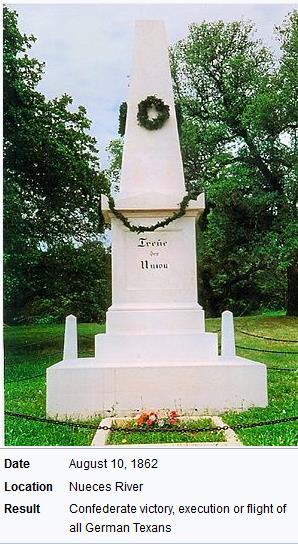
Happy 4th
Lawyers’ tools are words. We are often accused of using too many of them.
In today’s political climate, words have often lost much of their meaning. It is good to be reminded of the elegance and poetry of good legal writing.
So take a few minutes to read the Declaration of Independence, not just to remind us of who we aspire to be, but also to remind us of the power of words.
Two Charts
Here’s another flow diagram, from Lawrence Livermore National Laboratory, showing sources and uses of energy in the US, sent to me by a client. Note how much of our energy comes from fossil fuels – natural gas, coal and petroleum. We are addicted to hydrocarbons, and will be for some time. Recent changes in weather patterns reflect what is becoming more obvious – increased CO2 in the atmosphere is warming our planet. But how are we going to stop driving our cars, running our air conditioners, powering our computers? The problem with fossil fuels is that they are too efficient a source of energy. (click to enlarge)
And here’s a diagram given me by my niece, who is studying biology. I can’t tell you anything about it except that it reflects the inner workings of a human cell. Things have certainly changed since I studied biology. Note the reference to “Energy” on the right side of the diagram, coming from glucose – sugar.
The Kildays’ Adventure in Cambodia
Although this has nothing to do with oil and gas, I’d like to share a great story about one of my partners, Doug Kilday. Doug is one of Graves Dougherty’s senior litigators. He and his family are also active members of Covenant Presbyterian Church in Austin. In 2017, the Kildays decided to combine their professional skills and their call to service and ministry by spending a year in Cambodia. 
Doug and his wife Thais worked for International Justice Mission (IJM) (https://www.ijm.org/), the largest international anti-slavery organization in the world, working to end all forms of human trafficking, which currently victimizes more than 40 million people across the globe. IJM works to rescue victims, restrain and prosecute criminals, and restore survivors. The Kildays worked in IJM’s Phnom Penh office with local IJM employees. Doug’s job was to assist in prosecuting cases against traffickers in slave labor. Thais created systems to help the office manage their many cases. During their year in Phnom Phen Doug and the team conducted IJM’s first labor trafficking trial in Cambodia. Over the course of the year Doug helped conduct eight trials resulting in eighteen convictions. Doug: “There are more people in slavery today than at any other time in history. It is a 150 billion-dollar per year industry.”

Doug and Thais’ three children, Naeda (15), Lincoln (12) and David (9), attended Hope International School, which welcomed kids from thirty countries.
The Treaty of Guadalupe Hidalgo
On February 2, 1848, the United States and Mexico signed the Treaty of Guadalupe Hidalgo, ending the Mexican-American War. I’ve been reading the biography of Stonewall Jackson; he and many of the generals in the Civil War first experienced combat in that war. As part of the treaty Mexico ceded the portion of Texas between the Nueces and Rio Grande Rivers, and Texas and the U.S. recognized the validity of titles to land granted by Mexico and Spain in this area, known as the Nueces Strip.
Of course the treaty didn’t settle matters in the Nueces Strip. In 1850 a movement arose to establish a Rio Grande territory separate from Texas. Its leaders called for a convention to form a provisional government and a petition to Congress to recognize the area as a separate territory. Part of the reason for the movement was fear that Texas wouldn’t recognize their land titles.
In response, on February 22, 1850, the Texas Legislature passed a law establishing a commission to investigate and recommend for confirmation title claims emanating from Spanish and Mexican land grants. Known as the Bourland Commission, it consisted of two commissioners, William Bourland and James Miller, and Robert Jones, a well-known lawyer and judge, to serve as the commission’s attorney. The commissioners gathered evidence, including documents, affidavits and testimony, and prepared an abstract on each claim and a recommendation as to whether the claim should be confirmed or rejected. The legislature then acted to confirm or deny applications for recognition of the land titles.
 Oil and Gas Lawyer Blog
Oil and Gas Lawyer Blog


